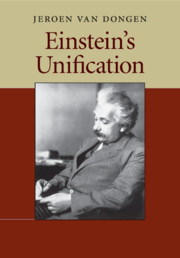Book contents
- Frontmatter
- Contents
- Acknowledgments
- Introduction
- 1 Formulating the gravitational field equations
- 2 On the method of theoretical physics
- 3 Unification and field theory
- 4 Experiment and experience
- 5 The method as directive: semivectors
- 6 Unification in five dimensions
- 7 The method and the quantum
- Conclusion
- References
- Index
Introduction
Published online by Cambridge University Press: 05 May 2013
- Frontmatter
- Contents
- Acknowledgments
- Introduction
- 1 Formulating the gravitational field equations
- 2 On the method of theoretical physics
- 3 Unification and field theory
- 4 Experiment and experience
- 5 The method as directive: semivectors
- 6 Unification in five dimensions
- 7 The method and the quantum
- Conclusion
- References
- Index
Summary
“This exposition has fulfilled its purpose when it shows the reader how a life's efforts are related to one another and why they have led to expectations of a particular kind.” Thus end Albert Einstein's “Autobiographical notes,” as we begin our account. Einstein's critical self-assessment was published in a collection of essays entitled Albert Einstein: Philosopher-Scientist, and it appeared in 1949, only six years before Einstein's final passage. These “Notes” constitute a rich source of personal reflections on his life and science; in particular, they discuss in detail the ideas that dominated his later years. The latter are the subject of this book, and it is with the above sense of purpose that we wish to approach it.
Thus, this study will be about Einstein's search for a unified theory for all physical forces, and its relation to his larger oeuvre in science and philosophy. Our story starts with the events leading up to the 1915 discovery of general relativity and its scope extends to Einstein's passing away in 1955.We have a vast subject, and it will be impossible to address minutely all its elements; both some familiar and some less familiar themes of Einstein's later physics will have to remain undiscussed. What we will present, rather, is an attempt, from a historical perspective, at a synthesis, and our selection will be aimed to serve that synthesis.
- Type
- Chapter
- Information
- Einstein's Unification , pp. 1 - 5Publisher: Cambridge University PressPrint publication year: 2010



